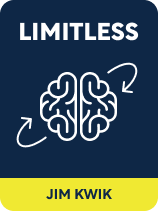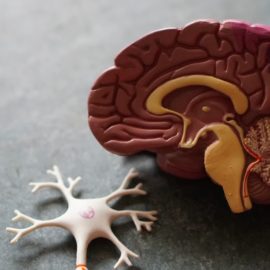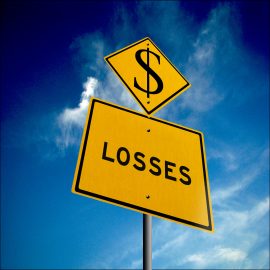

This article is an excerpt from the Shortform book guide to "Limitless" by Jim Kwik. Shortform has the world's best summaries and analyses of books you should be reading.
Like this article? Sign up for a free trial here .
What are self-limiting beliefs? How can you get rid of them?
Self-limiting beliefs are notions that you aren’t capable of much. It’s likely that you learned these beliefs when you were young. The truth is that you can actually learn and grow with hard work and effective methods. You can take actions to free your mindset and put your inner critic in its place.
Keep reading to learn how to handle self-limiting beliefs.
Understanding Self-Limiting Beliefs
Mindframe is the first part of Kwik’s limitless model. Your mindframe is made up of your attitudes, assumptions, and beliefs, and it heavily influences how you interpret and respond to situations. Nobody’s born with a mindframe; you learned yours from the people around you and the culture you grew up in.
Kwik says that many people learned limiting mindframes when they were young. As children, we were all reliant on the adults around us for everything from comfort, to food, to emotional support. Therefore, we learned that we weren’t able to do most things for ourselves—and, unfortunately, many of us never fully moved past that self-limiting belief.
Psychology calls this self-limiting mindframe learned helplessness. Kwik prefers to call it a LIE—Limited Idea Entertained.
| In Awaken the Giant Within, Tony Robbins suggests beginning to break the pattern of learned helplessness with a two-step process: First, identify a problem (large or small) that you can fix. Second, fix it. It sounds simplistic, but the act of consciously recognizing and fixing a problem will begin to show you that you’re not helpless, and that you can improve yourself and the world around you. From there, you can apply that knowledge to your life more broadly, and recognize that the only limits on your abilities are the ones you put there yourself. |
Fixed Mindset vs. Growth Mindset
Kwik says that many people don’t recognize their own genius and intelligence because they’re locked in a fixed mindset: They believe that their mental abilities simply are what they are, and there’s no way to change that. For example, someone who says he’s “not good at math” is in a fixed mindset: He doesn’t think that it’s possible for him to become better at it.
The truth is that it’s always possible to improve. This is what’s called a growth mindset: the understanding that you can develop your skills and talents. In other words, you can make yourself smarter with hard work and effective learning methods.
| Psychologist Carol Dweck coined the terms “fixed mindset” and “growth mindset” in her book, Mindset. Dweck acknowledges that people do have different innate abilities and talents; however, she adds that our minds can develop to a much greater extent than was previously believed. Furthermore, Dweck says that a growth mindset doesn’t just make you more ready and able to learn, it makes you more resilient against failures and setbacks. For example, if someone with a fixed mindset receives criticism at work, he would take it as a sign that he’s a failure who can’t do his job correctly. Someone with a growth mindset would take it as a chance to learn and improve. |
Free Your Mindset
In order to reach your limitless potential, Kwik urges you to find and reject your self-limiting beliefs. There are three steps to this process:
1. Identify a limiting belief. Start looking out for times when you tell yourself that you can’t do something. Look out for phrases like “I can’t,” “I don’t,” and “I’m not.” Don’t limit yourself in any way, even with things that you don’t think are all that important.
(Shortform note: We may hold limiting beliefs about other people as well as ourselves. For example, someone who grew up with abusive or absent parents might believe that other people aren’t trustworthy, or that authority figures are all malicious. Such beliefs may hold us back just as much as doubts about our own abilities do.)
2. Find the facts. One of the fundamental aspects of self-limiting beliefs is that, quite often, they’re simply untrue. Oftentimes, what you think are facts about yourself are actually opinions—and those opinions are frequently wrong. Therefore, it’s crucial to ask questions that get to the truth of the matter.
(Shortform note: One useful question to ask about your beliefs is, “According to whom?” For example, if you believe that you’re not smart enough, ask whose standard of “enough” you’re using—you’ll probably find that it’s just your own impossible-to-meet standard, rather than objective reality.)
3. Form a new belief. Now that you’ve labeled your self-limiting belief and studied the truth behind it, you’re ready for the most important step: replacing it with a new belief that’s both more accurate and more helpful to the limitless person you’re trying to become.
| Tony Robbins (Awaken the Giant Within) says that many beliefs—especially limiting beliefs—come from applying past experiences too broadly. For example, a child who finds that she doesn’t like carrots might conclude that she doesn’t like any vegetables, and will refuse to eat them. Robbins suggests breaking out of those beliefs by using imagination, rather than experience, as your reference point. Instead of remembering how much she hated carrots, that child might imagine how delicious some new vegetable dish might be; her imagination will then make her eager to try it. |
Kwik offers one more tool you can use to overcome self-limiting beliefs: Separate your inner critic from yourself. Give your inner critic a persona and identity that’s completely separate from you.
First, find that voice inside of you that says you can’t do something, or that you always screw up when it counts. Now give it a ridiculous name, and imagine it as a person with cartoonishly exaggerated features. Make fun of its negativity, and roll your eyes at the ridiculous things it tells you about yourself.
In short, turn your inner critic into something that you simply can’t take seriously. By doing so, you’ll dramatically decrease its power over you.
| Remove the “Self” From Your “Self-Critic” Rather than caricaturing your inner critic, in The Willpower Instinct, Kelly McGonigal advises redirecting your thinking. She suggests this three-step process: First, think about a time when you did something you “weren’t supposed to” (procrastinated, indulged a bad habit, and so on.) Identify your self-critical thoughts about that event. Second, tell yourself, “Everyone struggles with self-control sometimes. This event doesn’t mean that you’re weak, or a bad person,” or a statement to that effect. Third, imagine that it was your best friend who indulged and felt bad about it, instead of yourself. What would you say to that person? Would you offer support or criticism? What advice might you give your friend? By taking the focus off of yourself, you’re able to take a step back from the situation and stop criticizing yourself so harshly. Furthermore, by imagining that it’s someone else who indulged a bad habit instead of yourself, you may find that you have a clearer idea of what helpful advice or support you could offer. |
Self-limiting beliefs are generally lies. Learn the true, and live it.

———End of Preview———
Like what you just read? Read the rest of the world's best book summary and analysis of Jim Kwik's "Limitless" at Shortform .
Here's what you'll find in our full Limitless summary :
- Jim Kwik's guide to meta-learning: learning how to learn
- How to quickly and effectively learn about any topic
- How to use your new knowledge to its maximum potential






